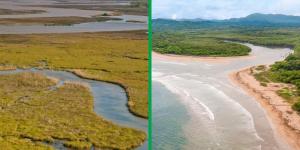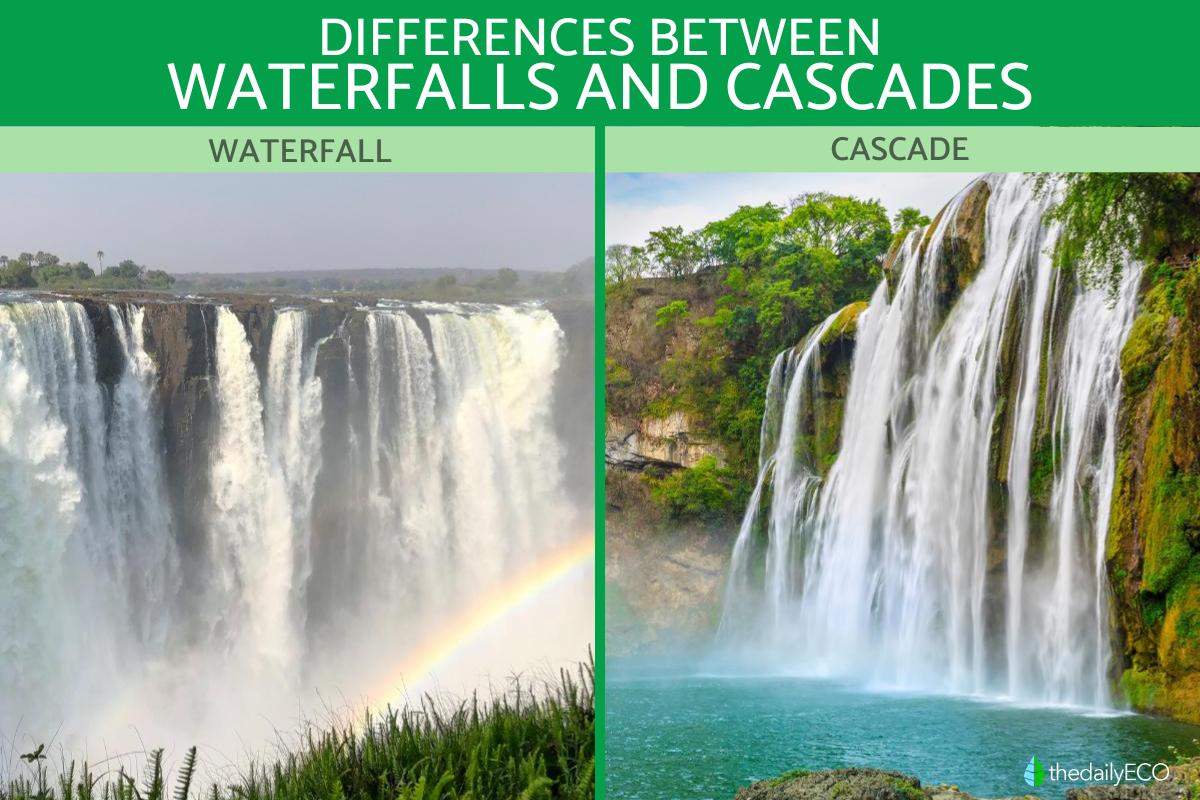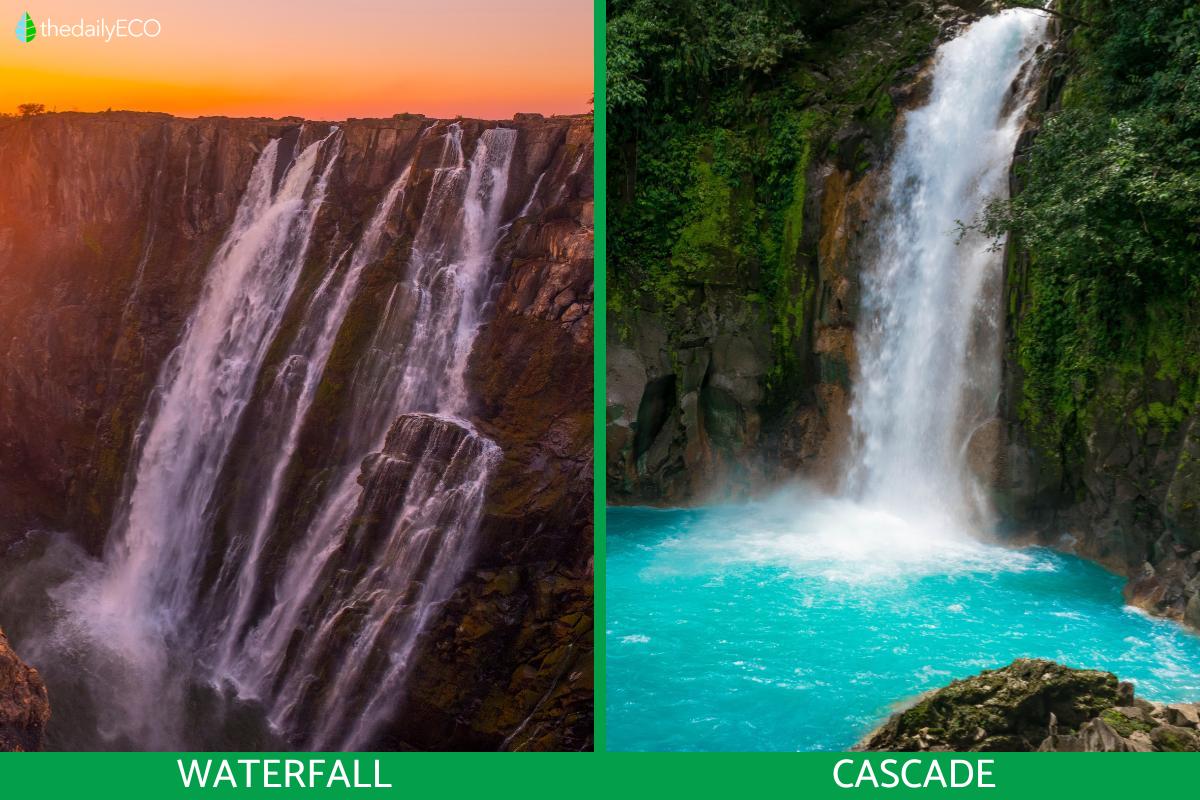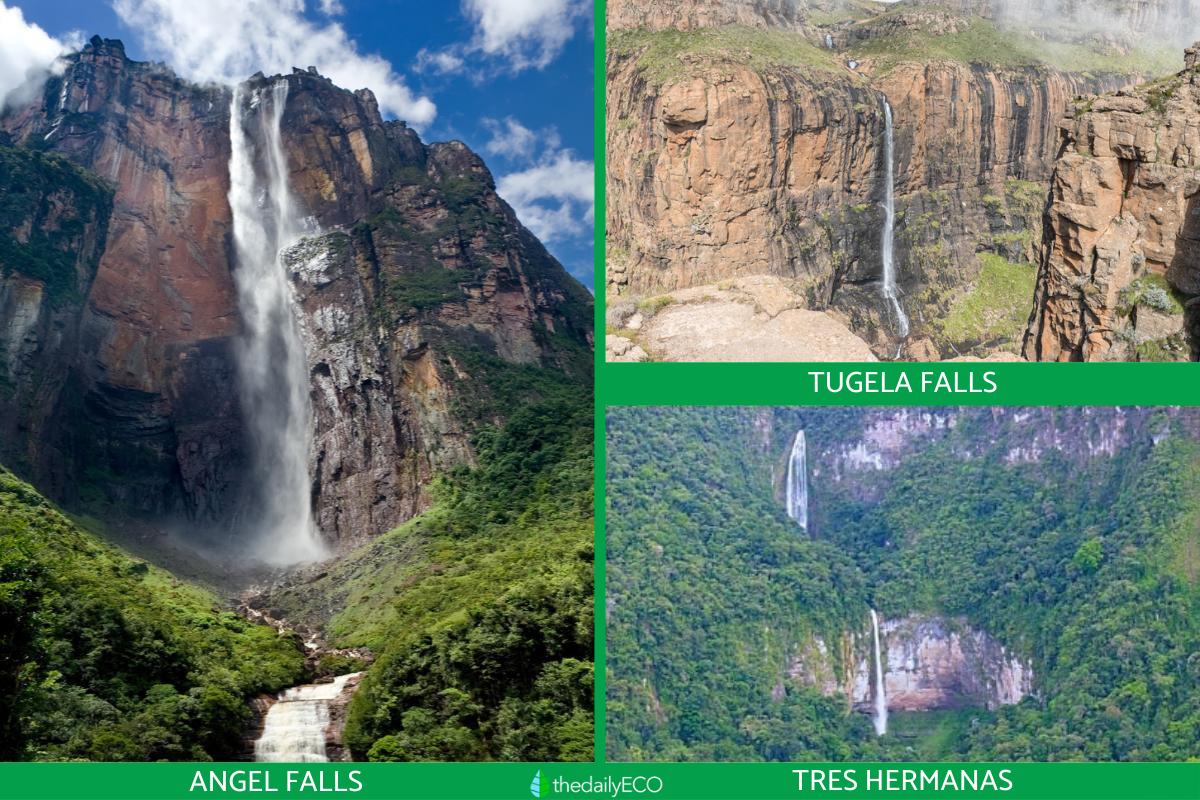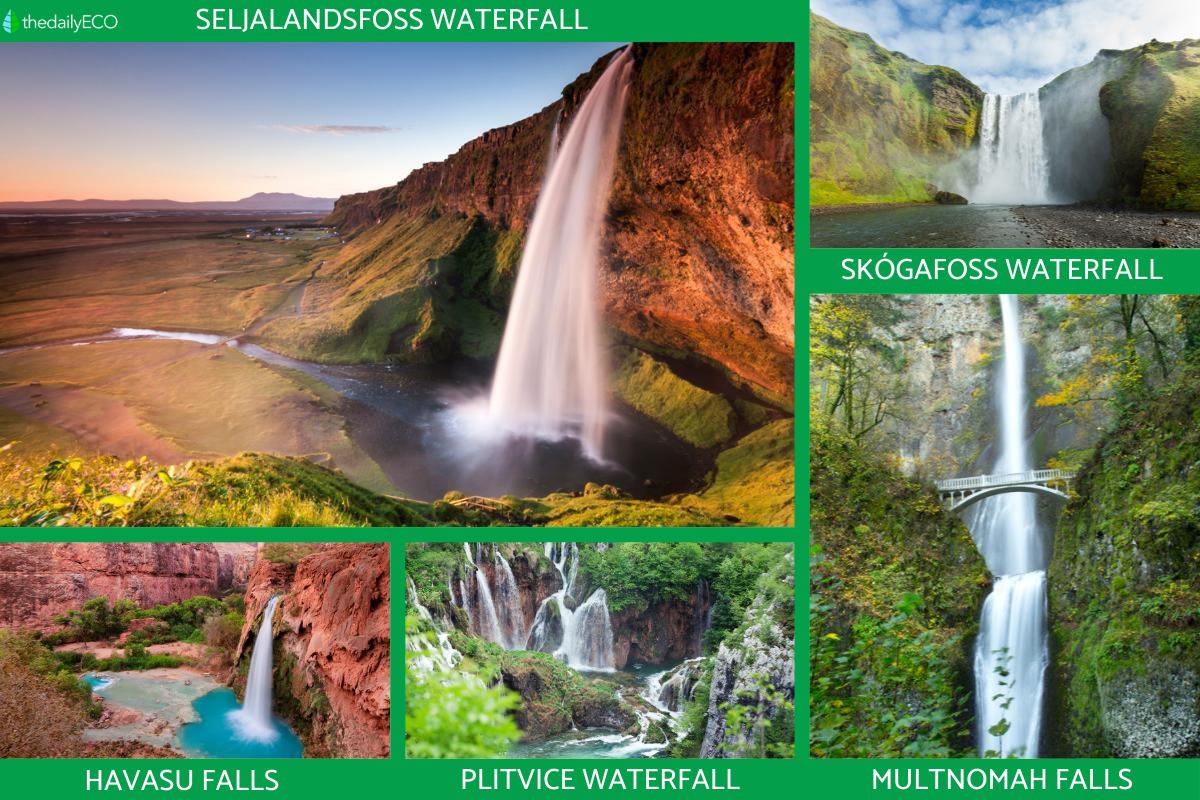Difference Between Waterfalls and Cascades


Waterfalls and cascades are very similar natural phenomena that are the result of water falling from a certain height. They are a result of uneven ground disrupting the water course. This uneven ground can be due to many processes which affect the geography of ecosystems such as erosion or even tectonic changes. Despite such similarities, there are certain differences between a cascade vs. a waterfall which can help us to better understand their nature. This is why thedailyECO shares the difference between waterfalls and cascades as we make a comparison of these natural water features.
What is the difference between waterfalls and a cascades?
The difference between a waterfall and a cascade lies mainly in their size and the magnitude of the water as it descends from height. A waterfall is a voluminous amount of water which falls from a great height in a single drop. It is usually spectacular due to the amount of water it displaces and the height from which it falls. Waterfalls usually form in large rivers and can reach thousands of feet in height.
In comparison, a cascade is a lesser amount of water falling from a lower height which can be spread over a series of drops. Although it can also be impressive, it is usually more modest than a waterfall, usually appearing in smaller streams or rivers. Cascades are common in mountainous areas or in areas where water flows down rocky slopes.
The difference between waterfalls and cascades are related to size metrics. While it is accurate to say that cascades are smaller than normal waterfalls, it is also accurate to say a cascade is a type of waterfall. It is also possible to have a waterfall which is made up of a combined system of smaller cascades.
Discover more about the difference between other geographical landmarks with our article on the difference between a lake and a reservoir.

Similarities between waterfalls and cascades
Despite the differences in size and magnitude, waterfalls and cascades share several important similarities. Both are water drops which are formed by the essentially the same natural process:
- Natural origin: both waterfalls and cascades are formed by the action of water flowing along a channel and encountering a steep slope in the terrain. In turn, this causes the water to fall freely to a lower part. This drop can be caused by geological processes such as erosion, tectonic movements or the formation of natural barriers.
- Erosion: in both cascades vs. waterfalls, the constant fall of water contributes to the erosion of the land. This causes the waterfalls and cascades to slowly change shape over time. This erosion can also cause water to continue to dig into the riverbed, creating ravines or canyons in the long term. Learn more about this process by looking at the different types of erosion in geography.
- Humid environments: in both waterfalls and cascades, the impact of falling water generates a large amount of humidity in the environment, creating humid microclimates around them.
- Aquatic ecosystems: both waterfalls and cascades provide important habitats for different life forms. These range from fish and aquatic plants to birds and land animals that inhabit nearby areas. We recommend reading our article on what is an aquatic ecosystem to learn more.
Examples of famous waterfalls
Generally speaking, the most impressive waterfalls are those which are the largest and fall from the greatest height. They are also often known for their local importance and some have great cultural significance in their places of origin. With this in mind, we look at some examples of famous waterfalls from around the world:
Angel Falls (Venezuela)
Angel Falls is the highest waterfall in the world, with an uninterrupted drop of 2,648 ft (807 m) and a total height of 3,212 ft (979 m). It is located in Canaima National Park in Venezuela and falls from the top of Auyantepui, one of the table-shaped mountains known as tepuis. This waterfall is an iconic tourist destination due to its imposing height and the jungle environment that surrounds it, but it is also a highly important landmark for Venezuela's indigenous peoples.
Tugela Falls (South Africa)
Tugela Falls, located in the Royal Natal National Park in South Africa, is the second highest waterfall in the world with a total height of 3,110 ft (948 m), divided into five different individual falls. Although less known than other famous waterfalls, their height and the spectacular mountain scenery that surrounds them make them a unique destination.
Tres Hermanas Falls (Peru)
Translated as the ‘Three Sisters’, the Tres Hermanas waterfall, located in the jungle of the Junín region of Peru, is the third highest waterfall in the world, with a total drop of 2,999 ft (914 m). Its name is due to the fact that the waterfall is divided into three large drops which fall through the dense vegetation of the Amazon rainforest. This waterfall is located in a remote location, making it simultaneously less accessible and more exotic.
Seljalandsfoss waterfall (Iceland)
Seljalandsfoss Waterfall is one of Iceland's best-known waterfalls and one of the most photographed places in the country. Although it has a relatively modest height of 197 ft (60 m), it is unique because you can walk behind the curtain of water as it falls. This offers a stunning view of both the waterfall itself and the surrounding landscape. It is located along the famous Route 1, which runs the length of the island.
Skógafoss waterfall (Iceland)
Another famous Icelandic waterfall, Skógafoss also has a drop of 197 ft (60 m) and a width of 82 ft (25 m). What makes it impressive is not only its size, but also its power. The sheer volume of water creates a dense mist, often adorned by rainbows on sunny days. The waterfall is surrounded by green surroundings, making it a perfect destination for nature lovers.
Havasu Falls (United States)
Located in the Grand Canyon on the Havasupai Reservation in Arizona, Havasu Falls is famous for its spectacular turquoise color due to the minerals dissolved in its water. It has a 98 ft (30 m) drop and is located in a rocky environment, making it look like an oasis in the middle of the desert.
Multnomah Falls (United States)
In the state of Oregon, in the United States, Multnomah Falls is one of the most visited waterfalls in the country. It has a total drop of 620 ft (189 m), divided into two levels. Its accessibility from the road and the famous bridge that crosses its base make it an iconic spot for tourists and photographers. Surrounded by a lush forest, the waterfall is impressive both in summer and winter, sometimes partially freezing over during the latter season.
Waterfalls are also important for the creation of other geographical landmarks, something you can see in our article explaining how fjords are formed.

Examples of famous cascades
Although cascades are not as tall or voluminous as waterfalls, this does not mean they have less cultural or geographical importance for the communities in which they are located. The following examples of cascades from around the world help us to better understand these differences:
Plitvice Waterfall (Croatia)
Within the Plitvice Lakes National Park in Croatia, there are a series of waterfalls that connect the different lakes in the park. None of them are particularly high with the highest being around 256 ft (78 m). However, the beauty of this place lies in the set of multiple waterfalls that fall into crystal-clear lakes, creating a dreamlike landscape. This park is a UNESCO World Heritage Site and attracts thousands of tourists every year.
Iguazu Falls (Argentina and Brazil)
While there are waterfalls in this waterfall system, there are also many cascades. We cannot necessarily mentioned each one by name, but visitors to the area can spend a long time searching them out since there is such a dense collection of them. They span an area which crosses the border between Argentina and Brazil at a certain point.
Krimml Falls (Austria)
While it is known as the largest waterfall in Austria, it is actually a tiered waterfall made up up multiple smaller cascades. When combined, these cascades have a total drop of 1,247 ft (380 m).
Now that you know the difference between a waterfall and a cascade, discover the difference between a lake and a swamp.

If you want to read similar articles to Difference Between Waterfalls and Cascades, we recommend you visit our Facts about nature category.
- Difference between cascades and waterfalls: complete guide. LuneauTech. : https://luneautech.es/diferencia-entre-cascadas-y-cataratas/
- The most impressive waterfalls in the world. Exoticca.
https://www.exoticca.com/blog/2016/08/the-most-impressive-waterfalls-in-the-world/ - Boshdemont, A. (2019). 10 of the most beautiful waterfalls in the world. Musement.
https://blog.musement.com/en/10-of-the-most-beautiful-waterfalls-in-the-world/



